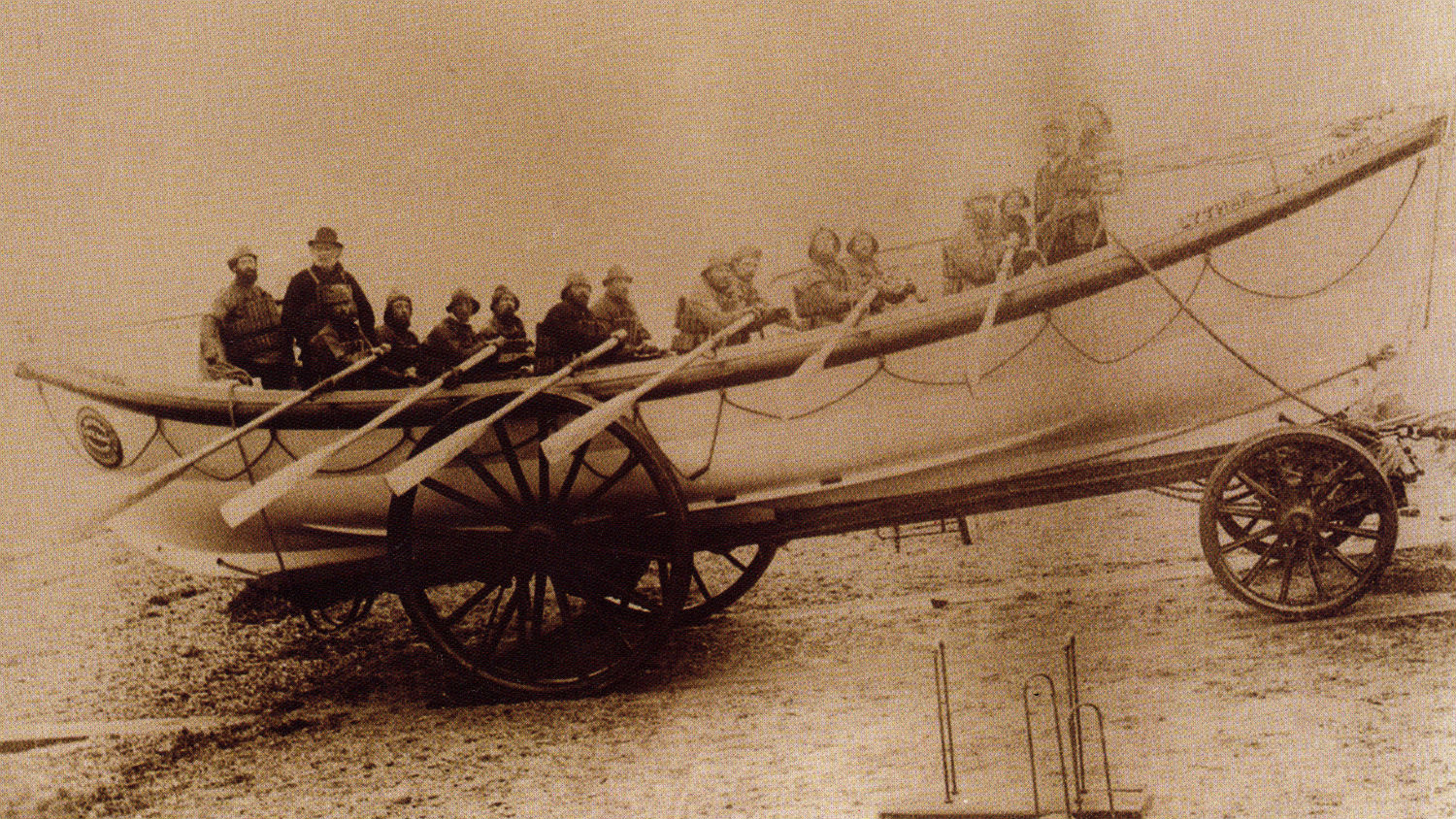To do proper justice to this sad tale from the Fylde Coast’s history, I’ve teamed up with Deborah Contessa, a fellow sandgrown’un and writer on Blackpool’s dark past. Her blog, Beyond the Black Pool, is a fascinating resource for anyone interested in grim tales from Blackpool and the Fylde Coast.
In December 1886, the deadliest incident in the history of the Royal National Lifeboat Institute (RNLI) took place off the Lancashire coast. After a ship foundered in heavy seas near Southport, three lifeboats were dispatched to rescue the crew. 44 men went out in atrocious conditions, rowing open lifeboats, to rescue twelve crew. 27 of them never came back.
The Hamburg-registered barque Mexico had departed from Liverpool in early December 1886, bound for the port of Quayaquil, Ecuador. The triple-masted ship got into difficulty on the 9th December in what has been described as the worst storm in living memory at that time. Unable to prevent the cargo ship from being blown off course into the Ribble Estuary, the ship’s captain sent out a distress signal.

Three lifeboats answered the call: the Eliza Fernley of Southport, closest to where the ship had found itself in difficulty, as well as the Laura Janet of St Anne’s and Charles Biggs of Lytham, both setting out from the opposite side of the Ribble Estuary.
Launching and reaching the scene first, the Eliza Fernley was caught by a strong wave as she approached the Mexico and capsized. 14 of the 16 crew were drowned, while the remaining two managed to hang on to the capsized boat until it ran aground. The survivors, named as Henry Robinson and John Jackson, then walked several miles home to raise the alarm that the lifeboat had been lost.

Far less is known about the ultimate fate of the Laura Janet. Departing from St Anne’s with a crew of 13 around 20 minutes after the departure of the Eliza Fernley, the lifeboat crew were seen to row around 500 yards from shore before hoisting sails and heading for the struggling Mexico. None of the crew were seen alive again, with the Laura Janet being found the following morning ran around, three dead crew members still aboard.
The bodies of the dead lifeboatmen were removed from the beaches and laid out in the coaching house of the nearby Birkdale Palace Hotel in Southport. Now converted into a public house named the Fisherman’s Rest, the building is still said to be haunted by the spirits of the lost lifeboatmen.

The Charles Biggs of Lytham, departing on her maiden voyage, was able to successfully reach the Mexico and rescue the 12 crew, who by this time had lashed themselves to the rigging to prevent themselves being swept overboard. Three oars were shattered in the rescue and the lifeboat repeatedly flooded, but the little boat was able make it to shore safely.
With the deaths of 27 volunteer lifeboatmen, all of them fishermen by trade, the disaster marks the worst loss of life in the history of the RNLI. The lost men left behind 16 widows and 50 children, prompting a public fund to be launched to support them.
Some £30,000 was raised in total, buoyed by donations from both Queen Victoria and the Kaiser of Germany. The disaster prompted the Queen to record in her private journal: ‘a dreadful misfortune has happened on the Lancashire coast, the loss of life boats and many lives, a terrible and inconceivable thing!’

The Mexico was refloated and for some time kept as a tourist attraction at Lytham St Anne’s, before returning to duties as a cargo ship. She was lost off Scotland four years later.
Today, a memorial statue, depicting a lifeboatman looking out to sea, stands on the promenade in St Anne’s, while further memorials were erected in cemeteries in both Southport and Lytham.
The RNLI continue their vital work saving lives at sea on the Fylde Coast. Funded entirely by charitable fundraising, their lifeboats continue to be crewed entirely by volunteers. Find out more about the work of the Blackpool RNLI crew, or donate to the organisation, here.
Southport is no longer served by a RNLI lifeboat station after its closure in 1925. Instead, the Southport Offshore Rescue Trust operates two lifeboats from the town, rescuing over 250 people since its formation in 1988. Like the RNLI, they are entirely dependent on charitable fundraising to continue this vital work. Find out more about SORT or make a donation here.
For those interested in more stories from the Fylde Coast, Deborah Contessa writes in detail about the many murders, mysteries and tales of the paranormal that come from this famous piece of coastline. As well as providing guided tours of Blackpool’s historic Layton Cemetery, she is a dedicated historian of Blackpool’s macabre past, artist, writer and demonologist. Follow her on Twitter at @Darkveilpara1.




I’m really pleased how this turned out. A tale definitely worth telling.
LikeLiked by 1 person
Thanks Deborah, delighted you’re happy with it. Thanks for all your help!
LikeLiked by 1 person
What a heartbreaking tragedy, these brave souls really did give their all in boats that had no engines or motors at all, exhausted beyond belief even before reaching the stricken craft.
Thank you, people like these truly are heroes and deserve to forever be remembered.
LikeLike
The story of the doomed crew perished in the water is so vividly narrated that it evokes the scenes of the tragedy in a mental theater. The images of a few men on the boat are also reminiscent of those in Stephen crane’s open boat, written based on an actual event in which crane himself witnessed the moments caught in between local he and death – to live to tell. What a great post you have written!
LikeLiked by 2 people
Absolutely first class illustrated account of this tragic event. Well done Deborah.
LikeLiked by 2 people